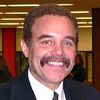A good teacher guides students toward success in the face of failure by teaching them to see the lessons in it.
A really good teacher does this over and over again.
Day in and day out.
For each and every student.
This approach is critical to my work as a teaching advocate with the National Urban Alliance for Effective Education, where we believe educators can renew the hope, determination and confidence of inner-city students through the use of a pedagogy that embraces neuroscience research and content rigor in the context of culturally relevant instruction. Properly applied, this method of teaching instills in students a passion for learning that in turn fosters hard work, resilience, character, grit and a respect for the teamwork so necessary for success in today's world.
This pedagogy is inspired by such top educational leaders as Linda Darling-Hammond of Stanford University; MacArthur Foundation "genius grant" awardees such as Lisa Delpit and Robert Moses; Gloria Ladson-Billings of the University of Wisconsin-Madison; Carol Dweck of Stanford University; the late Asa Hilliard III, professor of educational psychology; Anna Julia Cooper, a former slave who became an author and educator, earning her doctorate at age 65; as well as those who worked in the freedom schools Charles Cobb advocated during the '60s in response to segregated Mississippi schools and continue to lead through the efforts of Marian Wright Edelman and her colleagues at the Children's Defense Fund. Space does not allow me to list them all.
This manner of teaching is linked to significant achievement gains for students of color throughout the country. When taught in a way that is consistent with how their brains work, and when content is delivered with rigor and the expectation of success, students thrive. Research and data prove it.
So we know what works. We just need more students in more classrooms to experience it. Then, perhaps, we can begin to silence the "chaos" of contemporary living that sounds such shrill and loud alarms for students of color.
Consider these facts, collected by the Children's Defense Fund:
•Every five seconds during the school day at a public school, a black student is suspended;
•Every 46 seconds, a black student drops out of high school;
•Every minute, a black child is arrested and a black baby is born to an unwed mother;
•Every three minutes, a black child is born into poverty;
•Every four hours, a black person under age 30 dies from an accident;
•Every five hours, a black youth is murdered;
•Every day, a black person under 25 dies from HIV infection;
•Every day, a black person under age 20 commits suicide.
I am the father of two black teenagers. These statistics hit me like a body slam. How can our great nation tolerate such social inequity?
In his publication "Proust Was a Neuroscientist," Jonah Lehrer writes that "[though] chaos is everywhere ... what we need now is a new view of life, one that reflects our indeterminacy [that] ... we are neither fully free nor fully determined. The world is full of constraints, but we are able to make our own way."
Neuroscience is the key to a brighter future for many students.
In her book, "Brain Matters: Translating Research Into Classroom Practice," neuroscientist Pat Wolfe reminds us that African culture's use of music or rhyme to deliver information and content affects multiple locations in the human brain, while engaging emotions and more of the senses. This enables information to enter the long-term (working) memory in the prefrontal cortex with support from the hippocampus, amygdala and neurotransmitters such as oxytocin, dopamine, serotonin and norepinephrine.
Put simply, music can enable and accelerate learning. Consider the results if teachers used rap to introduce the works of Voltaire, Aristotle, Plato or Kant to develop a scholastic philosophy, for example.
Critics might say: "I learned without music as a tool. We just did the work. Why can't they?" I wonder how much deep learning truly happens in traditional classrooms, where lectures, busy work, disjointed worksheets and homework form the foundation. Traditional classrooms, I think, essentially ask students to go it alone.
Countless more students would succeed if they were to experience the concrete, hands-on, project-oriented and real-world simulated visual, auditory and tactile activities we know actively engage the mind and culture of the learner.
Student access to effective teachers and rigorous content, plus the application of constructivist theories and neuroscience research in the classroom, is a formula for success -- and one that we ought to use more often.
Eric J. Cooper is the founder and president of the National Urban Alliance for Effective Education, a nonprofit professional development organization that provides student-focused professional development, advocacy and organizational guidance to accelerate student achievement. He can be reached at e_cooper@nuatc.org.
